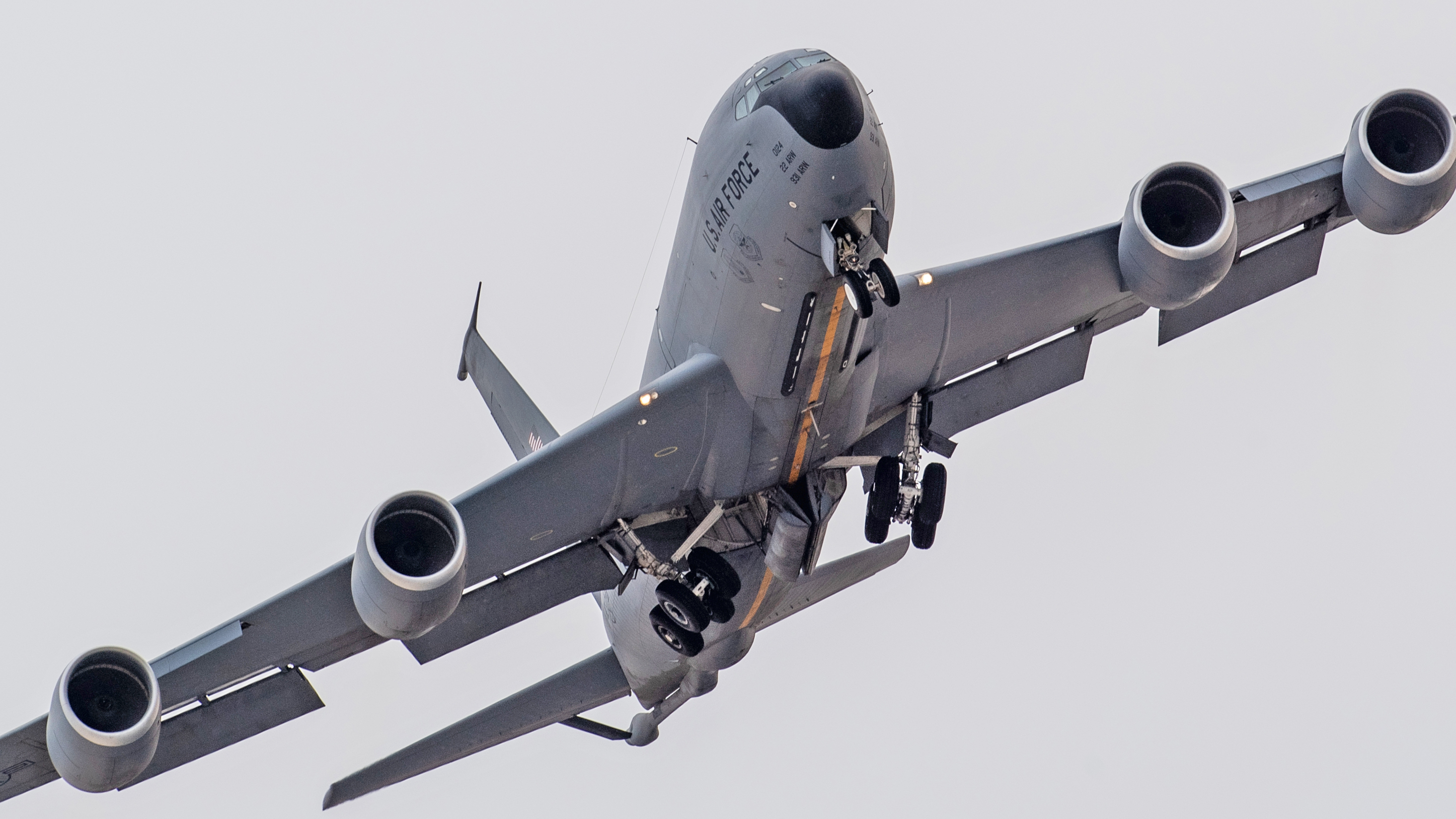An operational U.S. Air Force KC-135 tanker equipped with an artificial intelligence (AI) driven ‘copilot’ from autonomous flight technology company Merlin is set to take to the skies next year. The forthcoming flight testing is an important new step down a path that could lead to pilot-optional KC-135s. This also comes at a time of growing uncertainty around the Air Force’s future aerial refueling plans amid serious broader concerns about how the service expects to pay for various top-priority modernization efforts.
Merlin announced today that the Air Force has approved its airworthiness plan for the KC-135 fitted with its autonomy package. The company also hopes to have wrapped up the integration of what it calls the Merlin Pilot onto the tanker, as well as ground testing, by the end of the year.
“It’s not going to be a test asset. It’s not going to be sort of an X-plane that is out at Edwards,” Merlin founder and CEO Matt George said, referring to Edwards Air Force Base, the Air Force’s top test and evaluation hubs, in an interview with The War Zone last week. “It’s going to be a real operational Air Force aircraft.”
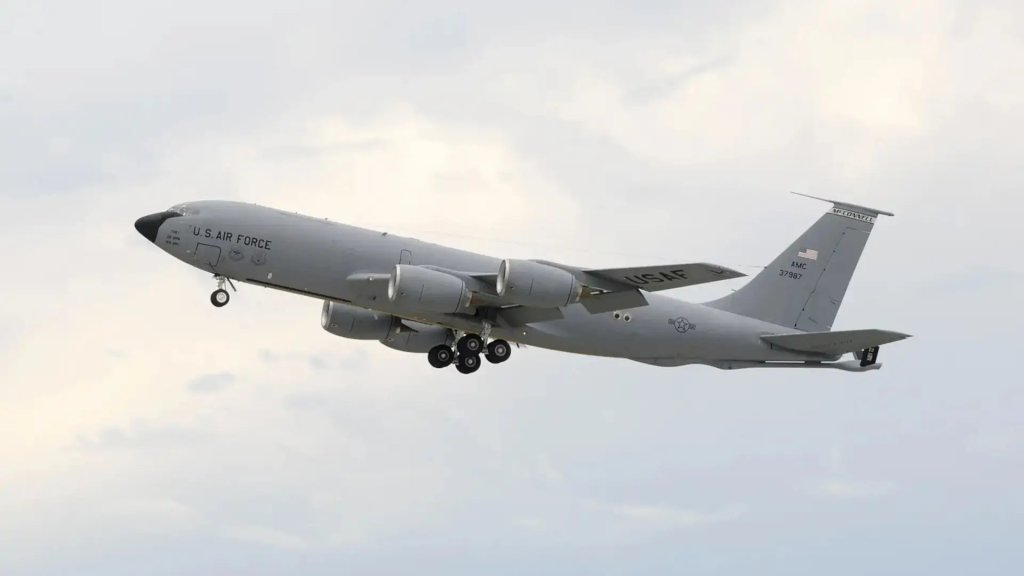
“So, the fact that the Air Force has gotten comfortable and has worked with us over the past three years to get to the point of an approved airworthiness plan where we can actually implement autonomy, not just in the experimental test range world, but on the operational fleet, sounds like sort of a process thing,” George continued. “But [it] is actually like a pretty big moment for the Air Force on taking autonomy from experimentation land and being able to start to transition that autonomy into the core force.”
Merlin was founded in 2018 and has already been flight-testing its autonomy package on other smaller aircraft types, including a Cessna Caravan. Overall, the company says it has been and remains focused on an incremental approach to adding autonomous capabilities and building trust in them, focusing first on capabilities that can help reduce the workload for human aircrews.

“So the Air Force has a particular need around the tanker ecosystem, especially now that the KC 135 will be in service for the next 30 years. So a big, big portion of what General [John] Lamontagne, who is the new [Air Force] Air Mobility Command [AMC] commander, has talked about, is being able to go modernize the fleet and be able to fight with what we have versus fight with what we wish we had,” Merlin’s George explained. “So a real focus on ‘how do we use today’s fleet to be able to go serve, you know, tomorrow’s conflicts?'”
The Air Force expects to have 349 KC-135s in service by the end of Fiscal Year 2025. It’s worth highlighting here that these are some of the oldest aircraft in the service’s inventory and are now set to be its first operational aircraft to get a capability like the Merlin Pilot.
“For the KC-135, there’s two use cases that the aircraft that the Air Force is interested in [regarding autonomy]. The first is, ‘how do we use autonomy to extend the crew duty day?’ So, for instance, how … could we make it possible to fly a KC-135 for 30 or 40 hours with two crew aboard. Clearly, that’s not possible in an unaugmented crew [arrangement]. So can we use autonomy to be able to go back those folks up so that one crew member could be resting while the other is flying, sitting next to the autonomy system, who’s acting as sort of that second pilot aboard the flight deck.”
AMC has already been experimenting for some time now with operating tankers, and not just KC-135s, with skeleton crews. While doing so could offer a way to increase sortie rates and overall operational capacity, which would be especially critical in any future high-end fight, such as one in the Pacific against China, it also raises safety concerns, as The War Zone has explored in detail in the past. AI-driven ‘copilots’ have long been presented, in part, as a valuable tool for increasing safety margins, including by reducing task saturation and general operator fatigue, in otherwise crewed aircraft.

“So, being super-specific about the KC-135 CONOP [concept of operations], at least in the initial version, here, is the autonomy system is the pilot flying. So the autonomy system is going from takeoff to touchdown, being able to go, follow a mission plan,” George said. “And that isn’t necessarily just waypoints, but follow[ing] objectives of a mission plan, fly the airplane, do things like talk to air traffic control, be able to go manage certain sets of emergencies, do things like route around weather – which is an important part of what our tanker crews do day in and day out – to be able to execute their mission while, you know, being aware of weather and terrain and other things … like respond to, you know, other aircraft that may be non-cooperative.”
“We’re working very closely with Air Mobility Command and AFRL [Air Force Research Laboratory] to do what’s called dynamic tanker repositioning,” George also added as an example of which mission autonomy in the context of the KC-135 could involve. “So a big part of what tanker crews are doing today is coordinating with air battle managers, fighters and other [receivers]… to essentially optimally position the aircraft … to essentially meet in the middle. … especially in a dynamic mission, dynamically repositioning the tanker based off of not just where the aircraft are right now, but where the aircraft will be and where they will need fuel, is tremendously important, and we’re going to be able to demonstrate some of those initial dynamic routing and capability sets, in addition to all the other autonomy features.”
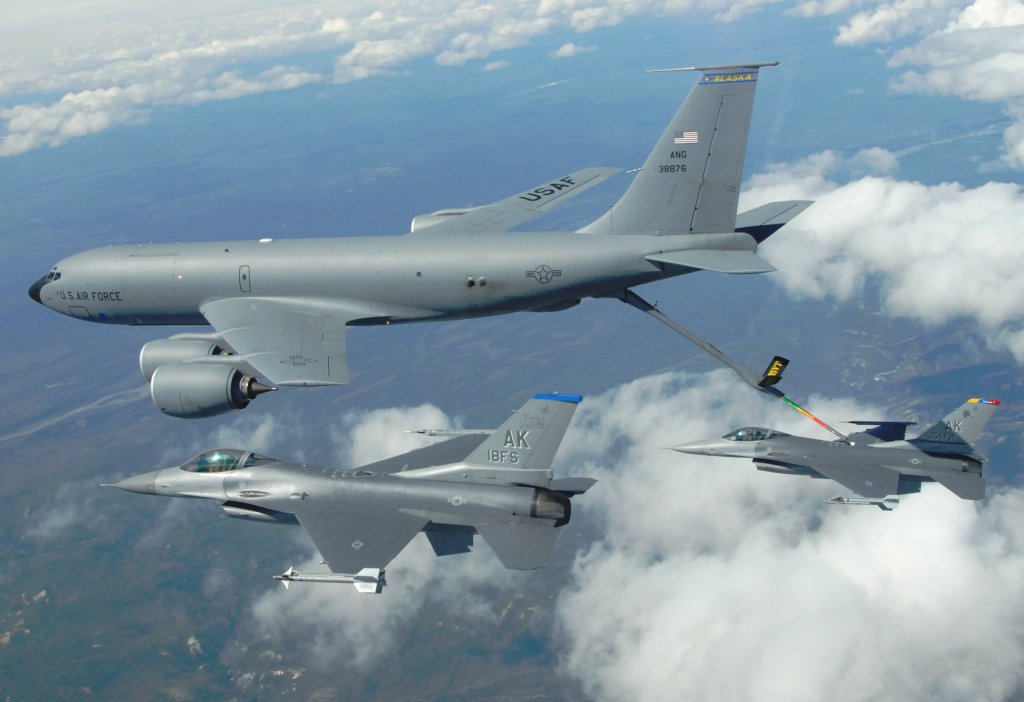
It’s worth highlighting that the Merlin Pilot having some ability to engage with air traffic control is significant just for routine day-to-day flying, especially within domestic U.S. airspace. The military and commercial aviation sectors globally have been working hard for years now just on general sense-and-avoid capabilities as part of efforts to make it safer for increasingly autonomous uncrewed platforms to operate an ecosystem with crewed ones. In the United States, the Federal Aviation Administration (FAA) continues to place heavy restrictions on where and when completely uncrewed aircraft can operate, which was highlighted earlier this year by the appearance of the pilot-optional Model 437 Vanguard demonstrator from Northrop Grumman subsidiary Scaled Composites. For the U.S. military, having a human somewhere on the loop looks set to be a requirement for autonomous capabilities in the air and anywhere else for the foreseeable future.
“We very much believe in sort of this human-in-the-loop, on-the-loop, off-the-loop progression, and enabling during a mission the human to go from those three states depending on, you know, mission need and operational need,” Merlin’s George told us. “Because if you just say, ‘hey, [the] human is going to be totally off the loop, that’s not great. And if you’re saying ‘hey, the human has to be in the loop for everything,’ that’s also not super helpful.”
“So being able to have a fully functioning take-off-to-touchdown autonomy system that’s able to go do everything the human pilot is able to go do in the flight deck, but enabling that human monitor to be in, on, or off, is tremendously important,” he continued.
Merlin and the Air Force do have ambitions to be able to operate KC-135s in a fully uncrewed mode if desired, which is the second use case for the Merlin Pilot package being looked at now, according to the company’s CEO George. He explicitly highlighted how this could also open up a new possibility for regenerating KC-135s currently sitting idle in the boneyard at Davis-Monthan Air Force Base in Arizona without necessarily increasing manpower requirements.

The Air Force has studied options for bringing some of those tankers back into service with the help of private contractors in the past, but has so far declined to do so. The U.S. military has been expanding its use of contractor-owned and operated tankers, including KC-135s, for non-combat missions in recent years, which helps free up organic aerial refueling capacity to support combat operations and otherwise reduces strain on those fleets.
When it comes to more autonomous aerial refueling operations, whether it be with KC-135s or any other type, a major outstanding question is about actually linking up with receivers. This is even more pronounced when it comes to refueling using the boom method, which is the Air Force’s preferred way of getting gas to aircraft in flight. Boom-equipped tankers today require dedicated human operators to safely make and maintain that connection. On the KC-135, that individual is physically situated looking out of the rear of the aircraft to perform this task.
Boeing, the original manufacturer of the KC-135 and of the Air Force’s newer KC-46s, has been working with the Air Force on more automated boom refueling capabilities, including the ability to refuel uncrewed platforms, over the years. The KC-46 notably features a remote vision system (RVS) that boom operators on those aircraft use to do their work from the aircraft’s main cabin. The RVS has been beset by serious issues and is currently undergoing a complete redesign.

Airbus in Europe has also been pushing forward on more advanced boom refueling capabilities requiring less human interaction. There has been significant progress with similar work involving probe-and-drogue refueling systems, as well.
“When we are talking about bringing autonomy to the tanker fleet, the autonomy has to perform as a human crew would perform. And today, the boom operator in the back of the airplane and the pilot flying the airplane are inextricably linked to each other,” Merlin’s George said. “They are flying that airplane essentially together as they’re performing the mission. So, while we can’t talk too much about it quite yet, we are extremely cognizant of the fact that boom autonomy is a huge part of delivering an autonomous tanking capability.
“It is something that we are actively thinking about and actively pursuing as part of the broader tanker mission autonomy system that not only are we deploying on the KC-135, but that we will likely put forward as the autonomy system for NGAS,” he added.
NGAS here refers to the Air Force’s Next Generation Air-refueling System effort, the requirements for which are still being finalized. NGAS is consistently described as a ‘system of systems,’ the core element of which has long been expected to be an entirely new stealthy tanker that might be crewed, uncrewed, or pilot-optional. However, there is now serious uncertainty around the NGAS plans as the Air Force faces worrisome concerns about the affordability of several top-priority modernization programs.
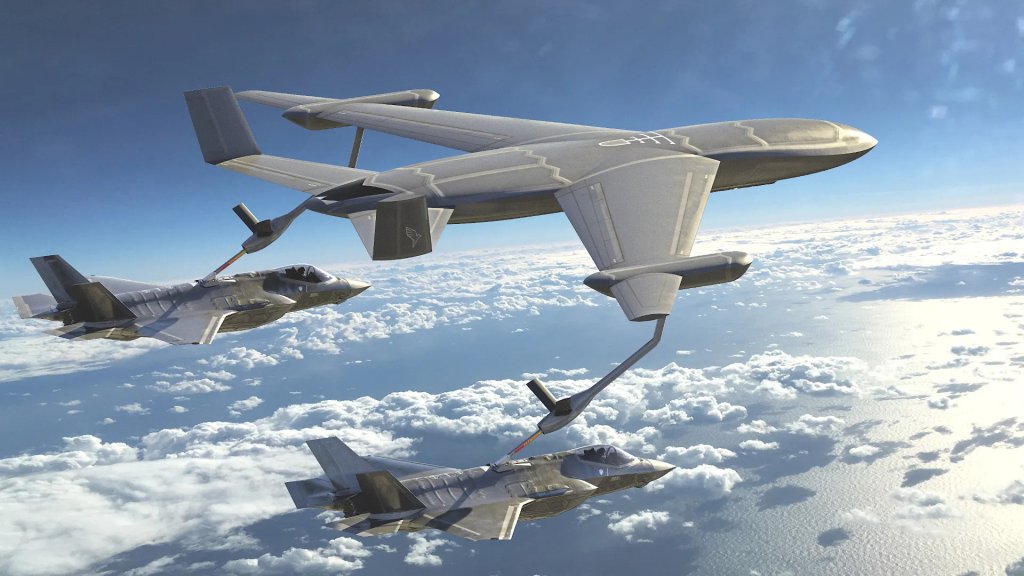
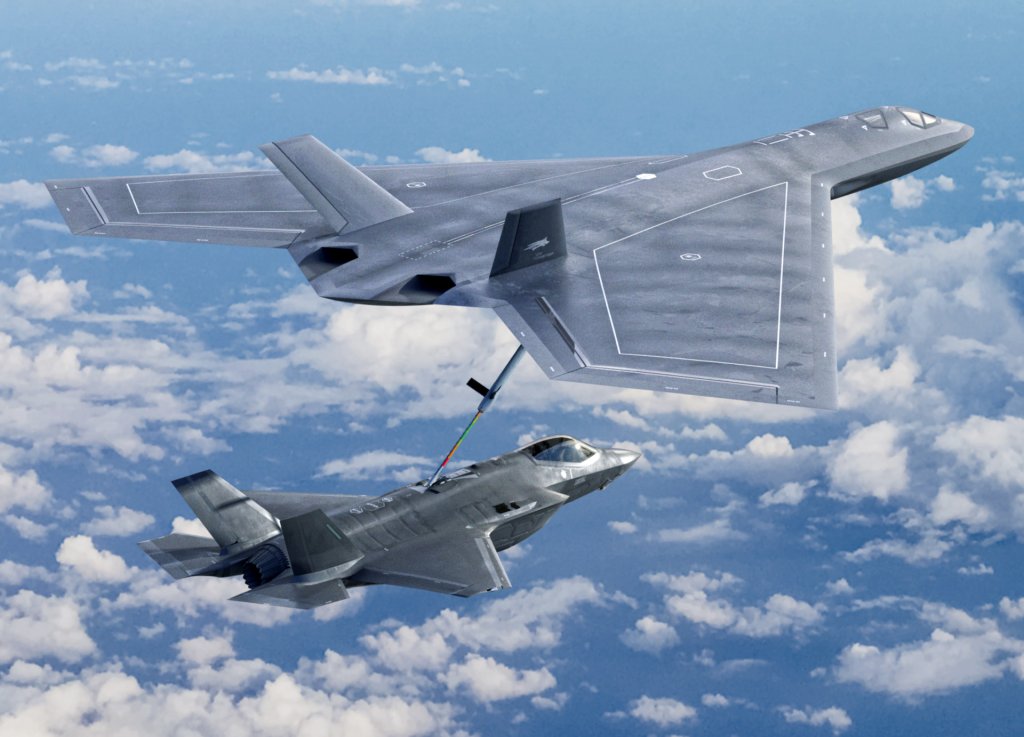
“Essentially the threat, China again, has reached out with new counter-air systems that could threaten our aircraft, especially tankers, at longer ranges, beyond the ranges which we normally would refuel fighter planes,” Secretary of the Air Force Frank Kendall said in a keynote address at the Airlift/Tanker Association’s (ATA) annual symposium on Nov. 1. “This put our whole tanker acquisition strategy in question. It is still in question, but we are working to resolve the uncertainty as quickly as possible.”
“The variable that concerns me most as we go through this analysis and produce a range of alternatives is going to be [the availability of adequate resources.] … to pursue any combination of those new designs,” Kendall also said, referring to NGAS, as well as plans for a new stealthy crewed sixth-generation combat jet and Collaborative Combat Aircraft (CCA) drones as part of the Next Generation Air Dominance (NGAD) initiative.
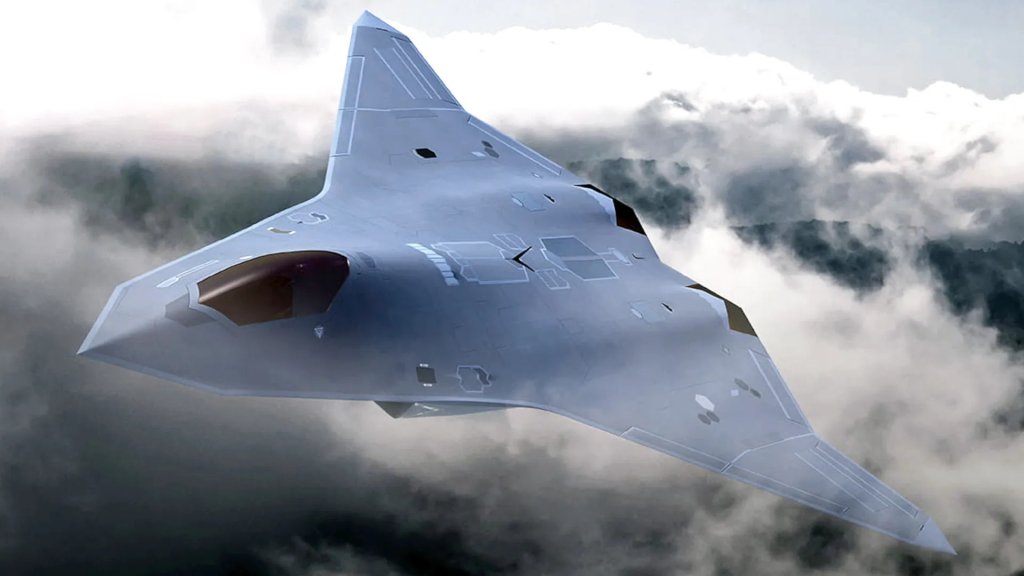
This, in turn, has put new emphasis on options for increasing the survivability and other capabilities of existing tankers.
“The need for improved connectivity and some degree of enhanced self-protection measure[s] appears to be attractive from both an affordability and cost-effectiveness perspective,” Kendall added in his ATA keynote. “It is also something that can be accomplished in relatively short time frames at relatively low cost.”
The Air Force has already been experimenting with new data-sharing capabilities for the KC-135, as well as their ability to control dedicated loyal wingmen-type drones to help protect them. There has also been talk of turning them into aerial motherships for launching swarms of smaller drones.
New autonomous capabilities for Air Force KC-135s is another area that the service is clearly continuing to invest in. Merlin’s existing work for the Air Force is not limited to the KC-135 or NGAS, either, and could also feed into broader autonomy efforts across the service and the rest of the U.S. military. The company is also on contract with U.S. Special Operations Command to demonstrate the Merlin Pilot integrated onto a C-130-type aircraft.
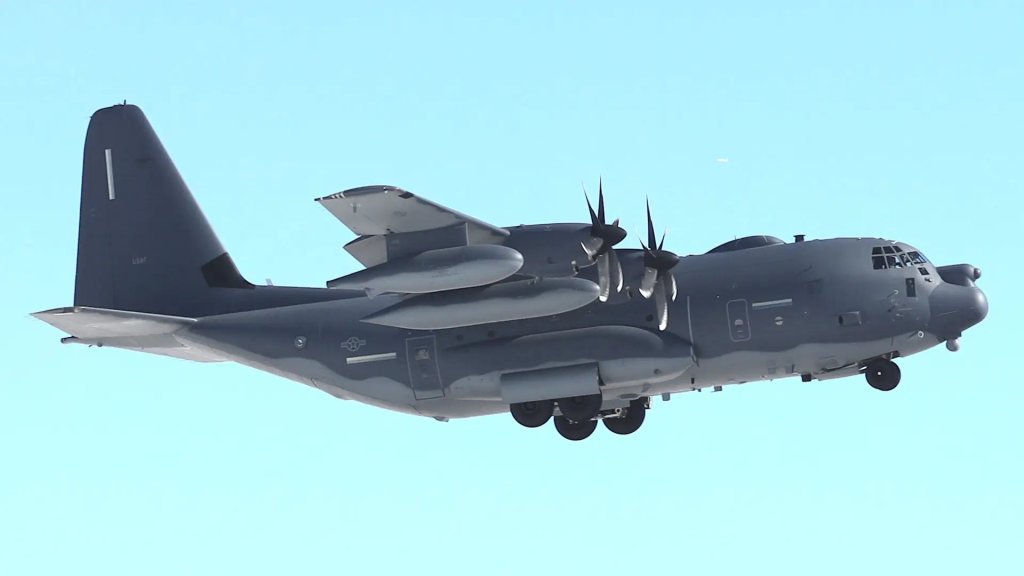
“So clearly, each different type of aircraft has different vehicle-level autonomy, and they clearly have slightly different missions, Right? An F-16 has a very different mission than the KC-135 which has a very different mission than an AC-130J, which has a very, very different mission than a B-52,” Merlin CEO George said. “But across those airplanes, the flight autonomy bit, right, the aviate, navigate, communicate, fly the airplane while executing on the mission [bit], is fairly common.”
“In our opinion, the KC-135 [work] is even more important as a core maturation sandbox for flight autonomy across the force, especially as the Air Force moves into a much more integrated sort of core capability developer,” he continued.
Altogether, an interesting future for the Air Force’s venerable KC-135s continues to take shape, which may have implications, especially when it comes to autonomous capabilities, that stretch well beyond those tankers.
Contact the author: joe@twz.com
